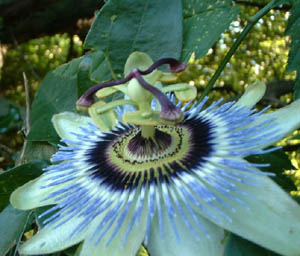
The Spiritual Garden (Part 2) – By Judy Fenyvesi
March 25, 2012 During the course of my work as a garden designer I’m often asked by my clients to incorporate into their garden designs a quiet corner for meditation or an area where they can sit quietly and generally just enjoy their garden.
During the course of my work as a garden designer I’m often asked by my clients to incorporate into their garden designs a quiet corner for meditation or an area where they can sit quietly and generally just enjoy their garden.
I think it’s so interesting that in this day and age where everyone is so hectic and busy, that more and more people regard their gardens as a place for quiet contemplation or even a spiritual haven.
Throughout history and in many religions the garden has often played an important role in being a place to seek spiritual enlightenment.
In the Christian religions, one of the most famous spiritual gardens must be the Garden Of Eden and the theme of the garden was evident through the medieval period where enclosed secret gardens were seen as a representation of the Virgin Mary.
These garden where often enclosed by a wall and planted up with lots of roses and usually had water features as well. Tending to these gardens was seen as a form of contemplation and prayer while in the worship of God’s flowers.
One feature that is seen in many spiritual gardens is the Labyrinth and the medieval Christian church produced an eleven ring sacred Labyrinth that had great religious and meditation significance.
The Labyrinth has only one path leading to the centre and one path back out again, its significance being that as you walk the Labyrinth one way then the other way it is meant to shifts awareness from the right side of the brain to the left.
This “mental exercise” was to induce a greater sense of awareness and spiritual enlightenment.
Islamic gardens were also held in great importance and gardens are referred to in the Koran.
Many Islamic gardens are meant to be a portrayal of what heaven would be like. Geometry and water are prominent features and both have symbolic meanings from the Koran.
The story of creation is said to have unfolded in a garden and God is considered to be the first gardener.
The Zen gardens of China and Japan where designed by Buddhist Monks for silent contemplation, for acts of worship and tea ceremonies. These gardens were designed to be places of tranquillity and often include several symbolic symbols to reflect solitude and the give enlightenment.
Once again water is an important element; often designed to help Buddhist Monks in their meditations.
Buddhists feel that by spending time in the garden helps to awaken one’s true self while contemplating the beauty of the surrounding garden in peace.
I believe that all gardens should capture some essence of nature, be an oasis, an area of paradise and your own little sanctuary from the busy world around us.


Leave a comment